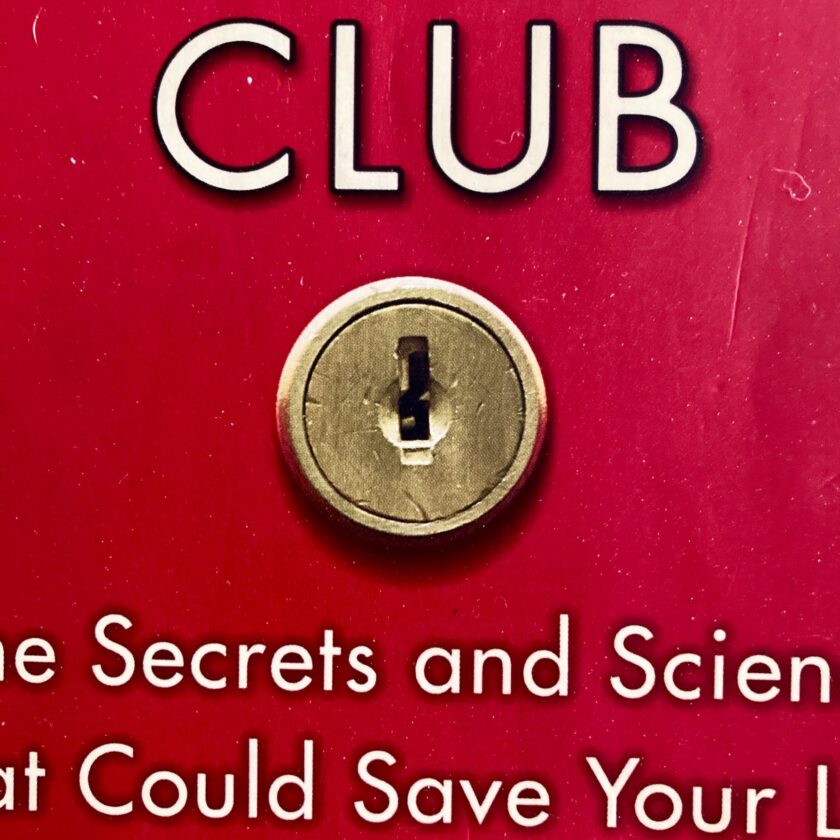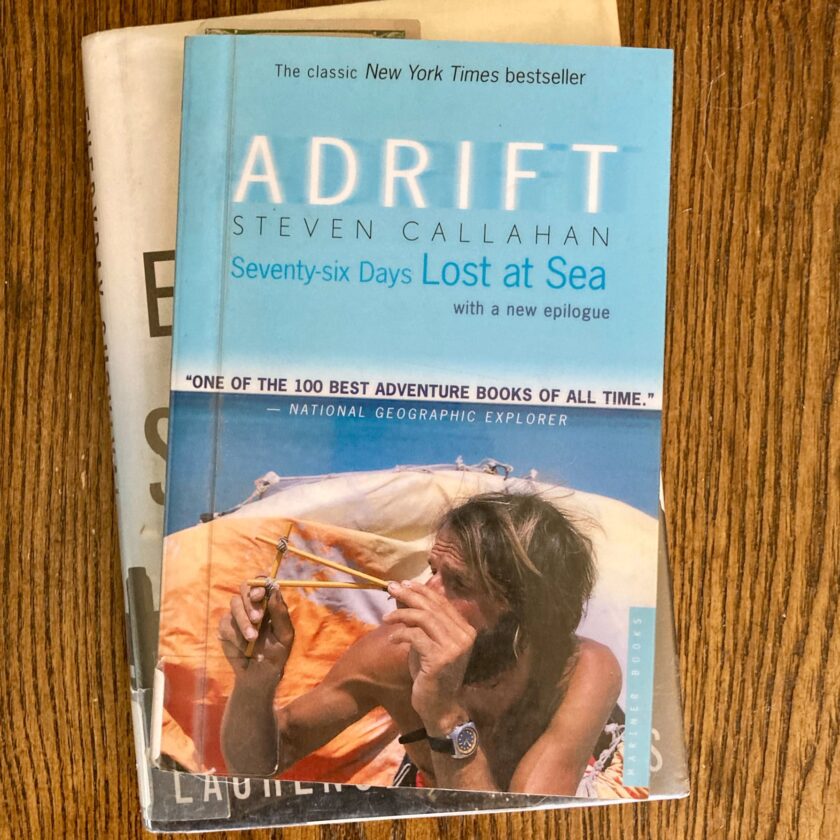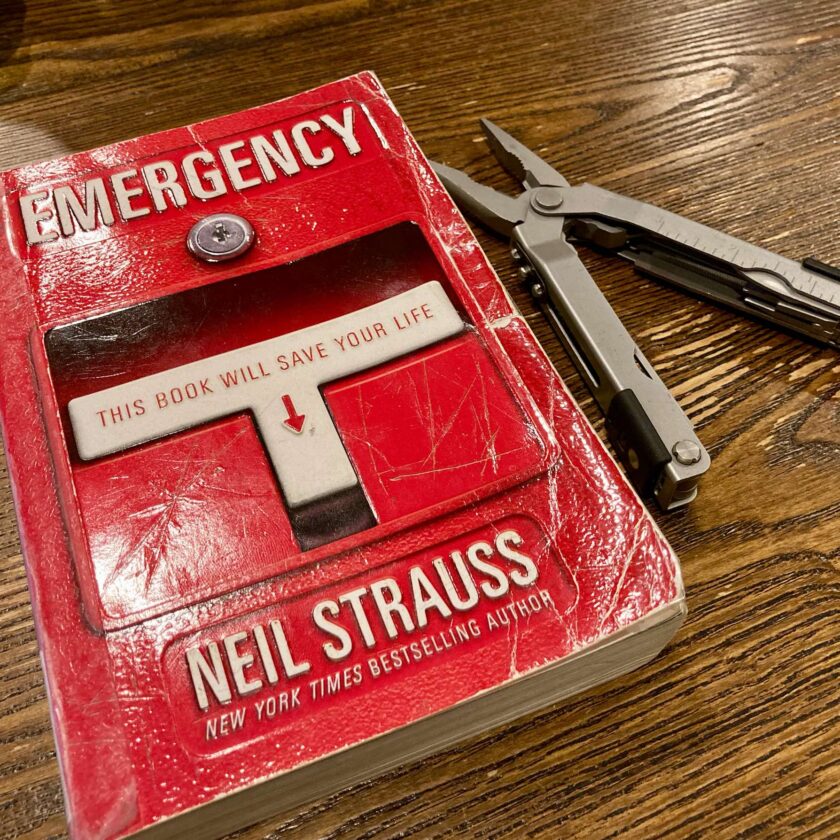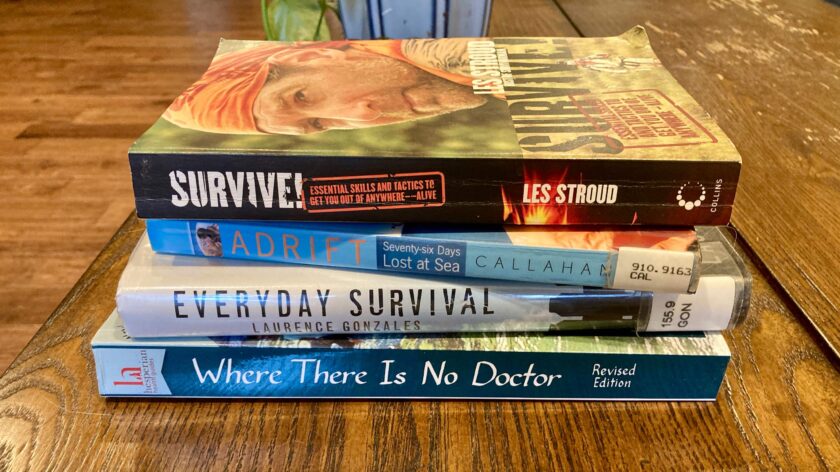Welcome to Part II of my favorite wilderness survival books. In Part I I covered a mindset book, a how-to, and a survival story. This post will follow that same format. Unlike Part I this post will not have a bad example to share…but I will share a bonus book at the end and it’s one of the most fun books in this genre.
This article contains affiliate links.
These books are truly worth your time to read. Whether your primary interest is wilderness survival, self-defense, adventuring, or just living a long life – these books are awesome. Let’s get into them.
Survival Mindset
The Survivor’s Club: The Secrets and Science that Could Save Your Life by Ben Sherwood. Part I of the Survivor’s Club looks at survival stories, though from a broader array situations, from surviving plane crashes to the story of a bicyclist who survived being hit by a 43,000-pound truck to survivors of cancer, rape, and suicide attempts. From each of these case studies the author attempts to extract the secrets that contributed to survival.
I won’t give too much away, but I do want to talk about Chapter 3, “Ninety Seconds to Save Your Life: The Wrong (and Right) Things to do in a Plane Crash.” I first read The Survivor’s Club in 2009, toward the end of a deployment to Central Asia. At the end of that deployment I would embark on a series of flights – a short, 90-minute hop to the capital city, several hours to Bahrain, 14 or 15 hours to Washington, D.C., then a couple more hours home. A chapter on surviving plane crashes seemed particularly relevant to me to me at the time. It has influenced where I sit on planes ever since.
I’m going to paraphrase a lot of what Sherwood says here. First, you have a really, really good chance of surviving a plane crash. About 96% of people involved in plane crashes walk you away. That’s from NTSA data on plane crashes from 1983 to 2000; 53,487 people were in plane crashes and 51,207 survived. Those are pretty good odds. But guess what? You can make those odds go up considerably by how think, act, and yes, where you sit.
First, you can actually pay attention to those safety briefings that tell you where the exits are, and how to use them. Sounds simple, but most people don’t even do that. You can avoid drinking before or during a flight so you’re operating at full capacity should something happen. During the two most dangerous times for crashes – the three minutes after takeoff and the eight minutes before landing, or “Plus Three/Minus Eight” – you should be awake, alert, and have your shoes on. You don’t want to run off a burning jet barefoot.
There’s a lot more, and crucially, there’s the issue of where to sit. Studies are “maddeningly contradictory” with some indicating the front of the plane is safest while others direct you to the rear of the bird. Sherwood says that part really doesn’t matter – sometimes planes hit nose-first, sometimes tail-first, and sometimes wing-first. What does matter is your proximity to an exit. The seats with the greatest chance of survival? Those within five rows of an exit.
Ever since reading The Survivor’s Club the first time I’ve burned those numbers in my head: 5, 3, and 8: 5 rows (or less) to an exit, and full alert/readiness three minutes after takeoff and eight minutes before landing. Personally, I put The Survivor’s Club in a very respectable second place behind Deep Survival, and consider it totally worth your time to read.
One complaint: Part II covers your “Survivor Type” and how to maximize the desirable adaptive traits you have. This takes up approximately 15% of the book and depends on an online quiz which the reader is expected to take. Unfortunately the quiz is no longer online.

Another: this will appeal only to a tiny minority of you, but… the lock on the cover is a wafer-tumbler lock. This is one of the least secure types of locks in existence. Maybe Sherwood is hinting at the accessibility of these survival secrets, but I doubt it. I hate to see a lock like this used as emblematic of anything. The material inside is good, but that’s sort of an immediate red flag for me.
Survival How-To
Survive! Skills and Tactics to Get Your Out of Anywhere Alive by Les Stroud. I have been a big fan of Les Stroud for a long time. I ran across this books on sale at a bookstore years ago and picked up several copies. I gave most of them as gifts, but held on to one. It has been on the shelf and occasionally – and sporadically – referenced. I finally pulled it down and read it from cover to cover. This is in very close competition with Cody Lundin’s 98.6 Degrees for my favorite survival book.
Stroud has more survival experience than just about anyone and puts it to good use here. Unlike a lot of older tomes (and like 98.6) Survive! is a very no-nonsense look at the tools, techniques, and realities of survival. The book starts with travel planning, survival kits, and psychology, then moves promptly into the hard skills in the following order: signaling, water, fire, shelter, food, and so on.
Survive!’s prosaic tone is epitomized by Stroud’s thoughts on fire-starting tinder. He says that it doesn’t matter what Latin names you know, it matters only that you can find material with the correct properties. This advice has served me extremely well in my hunt for a variety of natural tinder for an upcoming article in fire-starting.
Survive! is an outstanding wilderness survival how-to. I compare it to 98.6 because both are so incredibly good. Grounded, full of experiential knowledge, and disdainful of anything that doesn’t really matter. If you only had one wilderness survival book, Les Stroud’s Survive! would be a worthy candidate.
First-Hand Survival Account
Adrift: 76 Days at Sea by Steven Callahan. Man, this book is a NAIL BITER! Adrift was recommended in the pages of Deep Survival and is the story of a man whose sailboat sank. As the title suggests he survived for 76 days before finally being rescued. There are some very good lessons to be gleaned from Callahan’s experience.
First, he was extremely well-prepared. Callahan had purchased a 6-man life raft. While that may seem like excess for a single person, it wasn’t even large enough for him to lie down in; such rafts are probably intended to maximum occupancy for a few hours at most. Callahan had equipped his raft with an excellent compliment of survival gear, and had a bailout kit aboard his boat that he recovered, as well. I’ll be honest: many times when I’m assembling kits or practicing with survival gear I’m thinking, “I’ll probably never use this…” Callahan was well-prepared and had he not been it is very doubtful he would have survive. Gear does occasionally make the difference.

Like Ralston in Between a Rock and a Hard Place, Callahan also exhibited some of Deep Survival’s survivor traits. One was humor; Callahan remarks that as his boat is sinking he can see the light on his camera and jokes about the director’s impeccable sense of drama but terrible lighting (his boat sank at night). He is careful to note the beauty of sunrises and the dorado that swim alongside his boat, another common survivor trait. I’m not going to lie – I didn’t have to look very hard for them because Deep Survival does a good job of pointing them out. Still, it was interesting to read the story first hand.
What I’m really interested in, though, is what exactly did he go through? What did it take to survive two and a half months in a life raft? The answer is a whole lot. Callahan faced equipment failure. His gear wasn’t intended to be used day-in and day-out for months and some of it simply wore out. Some of it succumbed to acute insult; a thrashing dorado that he speared tore a 4″ hole in his raft that nearly sank him and required hours and hours of repair efforts.
You’ve got to hang in and be tough.
~ Steven Callahan
Obviously Callahan grappled with hunger and thirst. Throughout the book one loses count of the dorado and triggerfish he caught and ate, and he talks at length about the fantasies of food. Callahan’s discipline with water was amazing; with his solar stills producing from 6 to 30 ounces a day, he carefully built a stockpile of as much as he could store and drank the rest. When he dipped into the stockpile he studiously limited himself to a half-pint a day, in 90-degree heat. That is simply unreal to me.
And then there are the more dramatic threats of the sea. Rogue waves would occasionally swamp his raft – soaking his gear, wetting carefully dried fish, and spoiling hard-won water – with little or no warning. Sharks, drawn by the dorado that schooled under his raft were a frequent threat. The dorado themselves relentlessly pummeled his backside in picking barnacles off the underside of his raft.
Honestly, the thing that got to me most were the ships. Callahan saw nine ships on his 1,800 nautical-mile voyage. Despite signaling with flares and smoke, none of them saw him. That must have been absolutely heartbreaking, especially early on. I recommend you read Adrift for yourself and find out more.
Honorable Mention: In the Heart of the Sea: The Tragedy of the Whaleship Essex by Nathaniel Philbrick. In many ways Adrift reads like a modern, solo version of In the Heart of the Sea, which recounts the story of the survivors of the whaleship Essex. The Essex was sunk by a sperm whale in the Pacific, putting survivors adrift in lifeboats for three months (and, reportedly they did resort to the custom of the sea). The Essex’s loss was Melville’s inspiration for Moby Dick, too.
BONUS BOOK!
Emergency: This Book Will Save Your Life by Neil Strauss. Neil Strauss is the author of such erudite tomes as The Dirt (Motley Crue’s biography) and How to Make Love Like a Porn Star (Jenna Jameson’s biography). Don’t get me wrong – I read and thoroughly enjoyed both. And if I’m being honest I also eagerly consumed Strauss’ The Game: Penetrating the Secret Society of Pickup Artists.
I guess you can say I’m a fan of the man’s writing, but I resisted reading Emergency for years. The subtitle made this book seem like a collection of quick tips – not something I was interested in. When I began deep-diving into privacy several years ago someone mentioned the idea of getting a second passport. Intrigued I asked more. In response this person produced a copy of Emergency, so I gave it a chance.
At the beginning of the book the author is seeking a second passport so he can bail out of the U.S. if things get bad. He purchases a condo in St. Kitts in pursuit of this goal and while spending time there experiences rolling blackouts. Realizing he has no ability to deal with such problems he starts getting prepared.

I’m going to echo my friend John’s thoughts on this book: at the beginning you’re kind of like, “man, this guy is a wimp!” At the end of the book you’re thinking, “um…I guess I need to get my butt in gear and get some training.” The remainder of the book details Strauss’ attendance at Gunsite, Tom Brown’s Tracker School, and various other survival, defense, and first-aid related classes.
Emergency is a very fun read. The author’s story arc is interesting and I imagine his training track would make quite a few guys jealous. It’s also interesting to hear about a guy who is well outside the prepping/defense/survival community write honestly about it. Strauss went all-in, and though you may be tempted to snicker at his choice of a Springfield XD, don’t get too cocky until you see the entire body of his work. Save this one as a fun, easy read; don’t expect to get a ton of how-to out of it, but it is certainly entertaining and, in my case, motivating!
Closing Thoughts
I’m still chewing through some survival books, so I might be back with another installment. Or I might just review an individual book here and there. Anyhow…even if you don’t care about wilderness survival or survival at sea or that type of thing, read some of these books. Forget the specifics if you like, but remember the big picture lessons. They teach you what the human body is capable of. They teach you that “impossible” situations aren’t always impossible. They teach you that people survive some insane shit, mostly because of what’s between their ears. They teach you that sometimes being prepared makes all the difference.






